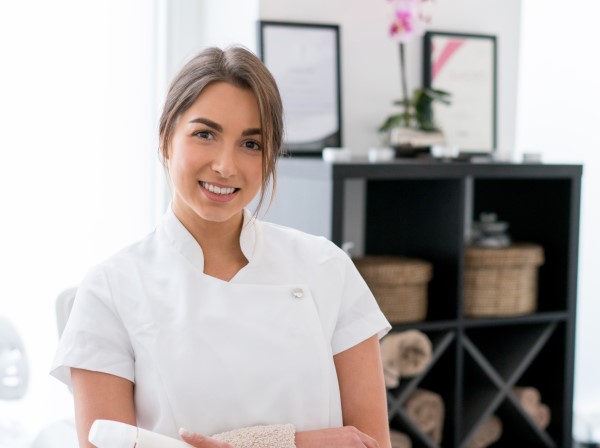
What are the advantages of ongoing education and training for salon teams? How important is it for suppliers to deliver ongoing education and training for the staff of their salon? How do you identify each staff member’s unique driver and what incentives are available to salon staff to reward their efforts for the benefit of the business?
These were just some of the questions tackled by eight industry thought leaders at the second Professional Beauty Industry Roundtable, which focused on staff motivation.
Our stellar panel included Tina Copland from Jax Wax Australia, Kelly Dermody from Ivy Skin, Cameron Campbell from Marque of Brands, Stacey Manning from Malibu Spray, Roman Garai from Advanced Beauty Australia, Suzana Ruzinov from Swissotel Spa, Rory Houston from Linda Meredith Skincare and Gillian Adams from Gillian Adams Salon & Spa.
Kelly said it was important for staff to be current in the industry, while Cameron stressed the importance of compliance.
Tina said we need to be more innovative and Roland said we should simplify training methods.
Stacey said she’d like to see suppliers allocating trainers to each salon, while Gillian stressed the importance of encouraging and inspiring staff members.
Rory said he’d like to see the industry moving towards a community that self-educates, and one that uses best utilises various social media platforms.
Read their edited responses below or watch the video for the full discussion.
Kelly:
“As an external training provider and also a salon owner, the need for staff to be current in the industry is very important. There is always going to be that big gap between the salons and finding the right places to get the education so your salon staff are current. A lot of external providers do offer that. But it’s important for suppliers to also work with external providers so that we are aware of what is out there on the market. The suppliers need to be trained on what is out there and how to deliver the right technology to the students. We need to know what is out there so we are using equipment the right way. People have access to equipment online and can then use it the wrong ways and not to the full benefit.”
Cameron:
“There’s a level of education knowledge from a business standpoint that I think, particularly, the industry needs to come together and learn. What I mean by that is compliance and what to do within your business. We need to ensure people don’t just buy products off the internet and take it to market. Because that damages everyone. If someone has a problem, that’s everyone’s problem. I’d like see a group come together and actually educate, not on a specific product, but on what sort of boundaries can be put in operation for a business. To teach the fundamentals of good business practice versus bad business practice. We need to elevate the industry to a level that everyone wins in that education and training, from a business perspective. We have trainers in our business, but they’re not industry trainers. Our trainers couldn’t go into another industry of automotive or hospitality and train because their core competency is training. Our trainers have great product knowledge and they can train their peers and colleagues, but they’re not trainers, that’s not their profession. We need overcome that challenge with innovation. Innovation will drive engagement, which means it will drive education. We’ve got to do the job of marketing innovation and bringing people along the journey of innovation so we retrain.”
Tina:
“We don’t sell to the public. Our brand is salon professional only. But I still every now and then find my product on eBay and have to contact the seller and ask them to remove it, as they are not authorised to sell it. We make hair removal wax and if you use it badly, you’ll burn someone. It’s as simple as that and it’s not for the general public to use because they’re not trained on how to do it. How do you educate the salon to educate their clients they are better off spending a few more dollars to actually have the treatment in the salon, rather than doing it themselves at home? It’s important to be able to educate the public so they know using this product properly at a salon would be much nicer than using it in your own home. We also need to be more innovative. Technology has really changed the way we do things. It used to be you had to face-to-face training. You don’t need to do that now. You have Skype available, video, there’s a number of ways you can utilise training now. You can do a webinar. Or you can put it on a DVD, or you can put it on Instagram.”
Roland:
“We need to simplify training, to make it more affordable. We no longer have two days of training for the whole staff. Who is going to pay for that? We need to make it as simple as possible, by implementing key words and phrases about the product into the therapists. You don’t need to know the whole list of ingredients of a product, or the facial, etc, just implement some key words and work on those. Convey those key words to the client from when they enter the room and work from there. So the client feels like the staff member is educated and feels like they’ve been given special care. We should remember that sometimes the more experienced someone is, the harder they are to train.”
Stacey:
“What would be really good to see is a supplier allocating certain trainers in their field to each salon. Because we all know that you can have a really great product, but if the therapist uses it incorrectly due to lack of proper training, you can end up giving the product a terrible name. Whether it’s make-up, tanning or hair, the customer has that experience with that brand. And they think it’s the brand’s fault rather than the technician.”
Gillian:
“I have 30 staff and nearly every week there’s training going on. Being five-star, your clients expect a certain standard of staff. Staff are happy to train while they’re getting paid, but it’s getting harder and harder for them to give up their time. So I have to constantly think of new ways to get that training in. With your team, you have to keep encouraging and inspiring them. And it’s really important for us, if we’re doing our job well, to make sure that our stylists or therapists are educating the clients into making sure they understand the different products and they’re using it properly and they’re not purchasing off the internet form unauthorised sellers.”
Rory:
“What we’re moving towards is creating a community that self-educates. That’s the next step for the industry and that’s what technology’s going to do. Certificate IV in Training and Assessment is just not enough. Brands can step in and create a community using technology. The way to do that is to create content on the mediums the therapists are already using. Which is primarily social media, Facebook and Instagram, etc. What the brands have the responsibility of doing is creating a community around their products, and building engagement with the therapists that use it, which bypass the spa, or bypasses the salon and goes direct to the therapist. By creating communities using social media platforms, and maintaining engagement through content delivery. If it’s a fun environment where the suppliers are being social with their current therapists that all use the same product, the conversation will happen organically and they’ll engage with that educational material outside of work hours.”

